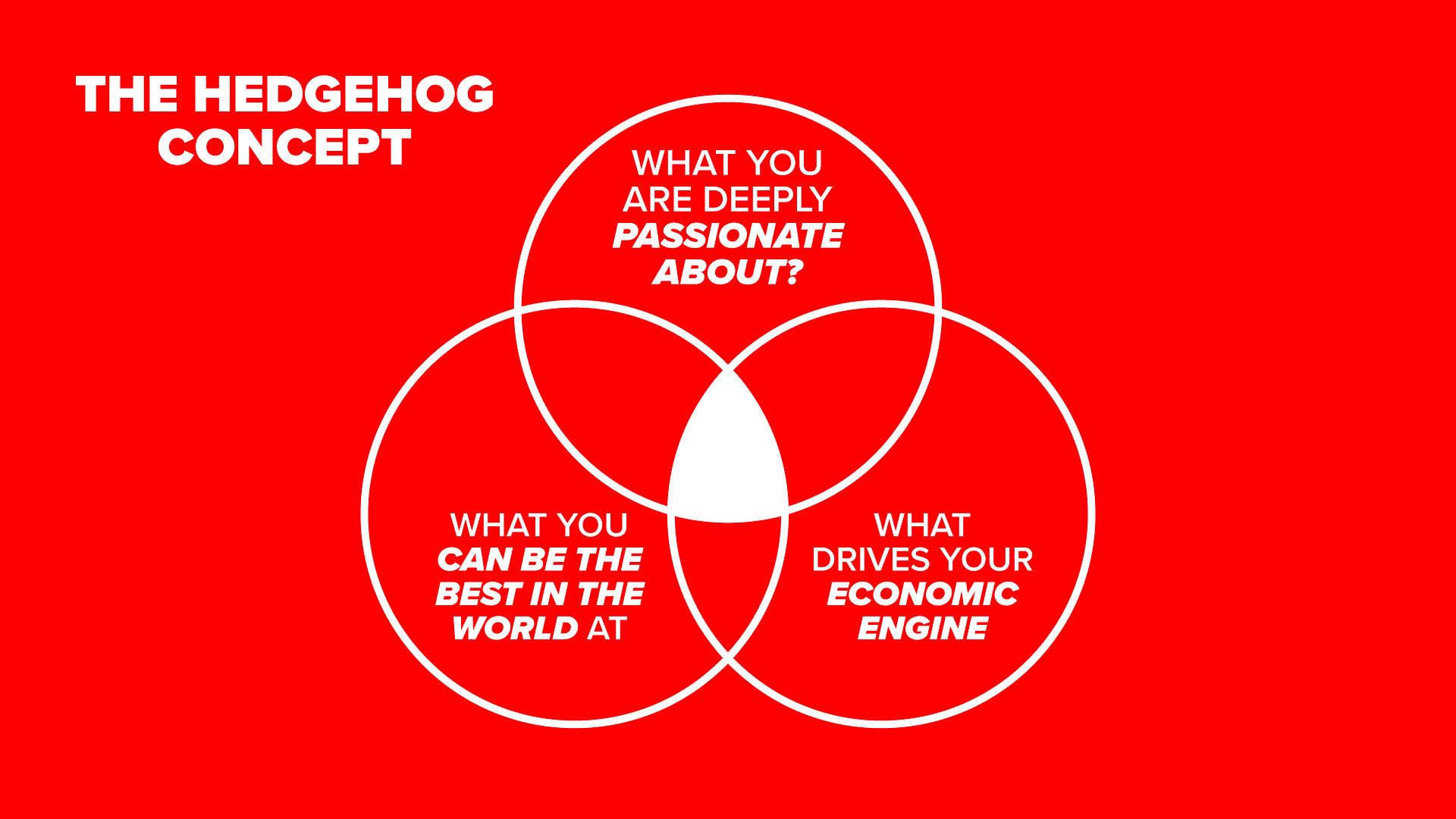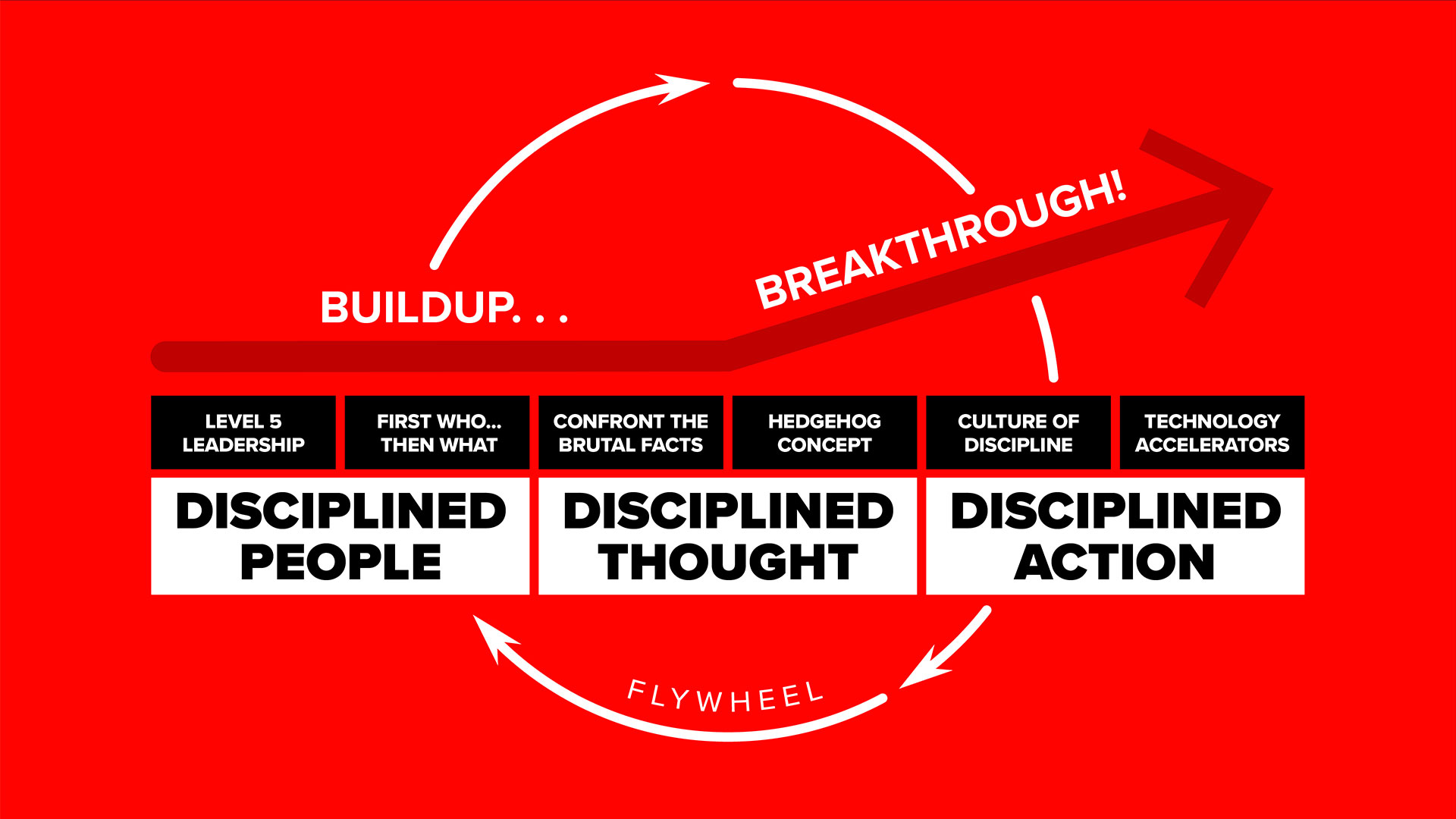It can be challenging to identify the best opportunities to pursue in business. Some can unlock incredible growth, while others may lead to mediocre results or worse. So, let’s explore how ‘The Hedgehog Concept’ can help you choose better opportunities.
This idea was first introduced in Good To Great by Jim Collins. While the book covers six key insights, The Hedgehog Concept is one of the most popular because it’s linked with achieving breakthrough results. So, let’s take a closer look at how it works.
“The fox knows many things, but the hedgehog knows one big thing.”
Ancient Greek Parable
The companies that made a good-to-great transition were like hedgehogs: simple, dowdy creatures with “one core strategy” and stuck to it. Meanwhile, the comparison companies (who were unable to achieve great results) were more like foxes: crafty, cunning creatures that know many things yet lack consistency.

The Hedgehog Concept is a tool for identifying your own simple, crystalline concept. It’s based on developing a deep understanding of three circles: (1) what you’re deeply passionate about, (2) what you can be the best in the world at, and (3) what drives your economic or resource engine. So, let’s take a look at all three.
Note: If you’re interested in exploring the entire good-to-great framework, be sure to check out my full book summary of Good To Great by Jim Collins.
Circle #1: What You Are Deeply Passionate About
Good-to-great companies focused on the activities that ignite their passion. The idea here is not to stimulate passion but to discover what makes you passionate. You can’t manufacture passion or “motivate” people to feel passionate. You can only identify what you and your team are already passionate about doing.
Now, this doesn’t mean that you have to be passionate about the mechanics of the business per se, although you might be. The passion circle can also be focused on the mission, vision, or underlying purpose behind the company. So, books like Start With Why and Find Your Why by Simon Sinek can help with this circle.
Circle #2: What You Can Be The Best In The World At
Every company would like to be the best at something, but few understand with total clarity what they have the potential to be best at. It’s not about coming up with a goal to be the best, a strategy to be the best, or an intention to be the best. It’s about identifying something that your business can truly become the best at doing.
Don’t mistake this with identifying the core competencies of the organization. You can have competence at something but not necessarily have the potential to be the best in the world at it. Instead, this is about selecting an opportunity that the organization has a real shot at doing better than anyone else. The distinction is critical.
Circle #3: What Drives Your Economic Engine
Every organization must understand how to generate sustained cash flow. One way to gain insight into the drivers of your economic engine is to ask yourself: “If you could pick one and only one metric to systematically increase over time, which one would have the greatest and most sustainable impact on your economic engine?”
Potential answers might include profit per customer, profit per employee, profit per retail location, profit per square foot, profit per geographic region, or profit per product.
The key is to use the question to gain understanding and insight into your economic model. Simply asking it can stimulate intense dialogue and debate. As a result, even in cases where the teams fail (or refuse) to identify a single metric, the challenge of the question can drive them to achieve deeper insight into their economic model.
How To Use The Hedgehog Concept
All of the good-to-great companies understood that the essence of profound insight is simplicity. By addressing these circles and understanding the overlap between them, they were able to identify their Hedgehog Concept. As a result, they could use it as a frame of reference for all future business decisions.
At their best, good-to-great companies followed a simple mantra:
“Anything that does not fit with our Hedgehog Concept, we will not do. We will not launch unrelated businesses. We will not make unrelated acquisitions. We will not do unrelated joint ventures. If it doesn’t fit, we don’t do it.”
While it sometimes took years for the concept to come together, the eventual discovery coincided with breakthrough results. That’s because when an organization stays within its three circles, it can identify more attractive growth opportunities.
Beyond The Hedgehog Concept From Good To Great
Keep in mind that The Hedgehog Concept is only one of the six tools covered in Good To Great by Jim Collins. So, I recommend that you familiarize yourself with the entire model to discover how you can make full use of the related ideas.

You can learn more by reading my book summary of Good To Great or my articles on Level 5 Leadership and The Flywheel.
Are you looking for another great book? Consider checking out the best leadership books, the best management books, or the best business books.
You can also subscribe to The Rick Kettner YouTube Channel or The Rick Kettner Podcast to get updates about future articles, summaries, and reading lists.
Do You Have A Question Or Comment?
Please visit the Hedgehog Concept video on YouTube to share your thoughts in the comment section.


